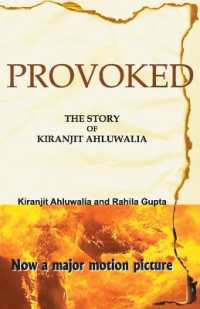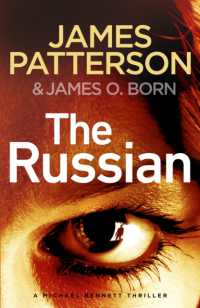Full Description
This book is the first major essay volume in over a decade to focus on Tudor and Jacobean painting. Its interdisciplinary approach reflects the dynamic state of research in the field, utilising a range of methodologies in order to answer key art historical questions about the production and consumption of art in Britain in the 16th and early 17th century.
The introduction sets the tone for the interdisciplinary approach that is taken throughout the volume .It brings together a discussion of the context for the production of painted images in Tudor and Jacobean England with a selection of technical images of twenty paintings that span the period and demonstrate the information that can be gained from material analysis of paintings.
In further chapters, leading exponents of painting conservation and conservation science discuss the material practices of the period, using and explaining a range of analytical techniques, such as infrared reflectography and dendochronology. Questions of authorship and aspects of workshop practice are also discussed. As well as looking at specific artists and their studios, the authors take a broader view in order to capture information about the range of artistic production during the period, stretching from the production of medieval rood screens to the position of heraldic painters. The final section of the book addresses artistic patronage, from the commissioning of works by kings and courtiers, to the regional networks that developed during the period and the influence of a developing antiquarianism on the market for paintings.
The book is lavishly illustrated in colour throughout, with reproductions of whole paintings and many details selected to amplify the text. It will be an essential source for those working in the fields of art history, conservation and material science, and of interest to lovers of British Tudor and Stuart painting.
Contents
Introduction
Artists, Patrons and the Contexts for the Production of Painted Images in Tudor and Jacobean England
Part I Material Practices
Introduction
1: Aviva Burnstock: Interpreting the Results of Technical Analysis
2: Ian Tyers: Panel Making, Sources of Wood, Construction 'Trademarks' and Conclusions on the Making and Trade in the UK
3: Sophie Plender: Materials, Techniques and Practice: The Relationship between Artists' Treatises and Painting Methods and Techniques in Tudor and Jacobean England
4: Libby Sheldon: Palette, Practice and Purpose: Pigments and their Employment by Native and Anglo-Netherlandish Artists in Tudor and Jacobean Paintings
5: Rachel Billinge: Artists' Underdrawing and the Workshop Transfer Process
6: Klaas Jan van den Berg, Katrien Keune, Suzan de Groot and Henk van Keulen: Binding Media in Tudor and Jacobean Paintings
7: Marie Louise Sauerberg: The Conservation of Paintings from the Tudor Era in the Context of Portraits of Elizabeth I
8: Caroline Rae: Marcus Gheeraerts the Younger, John de Critz the Elder, Robert Peake the Elder and William Larkin
Part 2 Tudor and Jacobean Painters and Their Workshops
Introduction
9: Lucy J. Wrapson: A Medieval Context for the Artistic Production of Painted Surfaces in England: Evidence from East Anglia (c.1400-50)
10: Susan Foister: Distinctive or Different? English Artistic Practices in a European Context
11: Victoria Button: 'Pictures by the Life': The Materials and Techniques of Holbein's Portrait Drawings
12: Hope Walker: Talent and Adversity: A Reassessment of the Life and Works of Hans Eworth of Antwerp and London (active 1540-74)
13: Katherine Coombs and Alan Derbyshire: . Nicholas Hilliard's Workshop Practice Reconsidered
14: Edward Town: 'A Good Eye, and Steadfast Hand': Painting in London 1547-1625
15: Elizabeth Goldring: Heraldic Drawing and Painting in Early Modern England
16: Karen Hearn: Migrant Artists in Jacobean London
17: Catharine MacLeod: Robert Peake: Portraits, Patrons and Technical Evidence
18: Anita Jansen and Johanneke Verhave: The Ambassador and the Painter: Sir Dudley Carleton Painted by Michiel van Mierevelt
19: David Taylor: Gesture Recognition: Adam de Colone and the Transmission of Portrait Types from the Low Countries and England to Scotland
Part 3 Patronage, Markets and Audiences
Introduction
20: Frederick Hepburn: 'pintor Ynglés': The Earliest Evidence for Portraiture at the Court of Henry VII
21: Charlotte Bolland: SAT SUPER EST': A Portrait of Henry Howard, Earl of Surrey
22: Catherine Daunt: Heroes and Worthies: Emerging Antiquarianism and the Taste for Portrait Sets in England
23: Robert Tittler: Painters' and Patrons' Circles in Provincial England, c.1580-1640
24: Susan Bracken: Collectors in England 1580-1630 - Evolutions in Taste








